What is 583 standard gold and how does it differ from 585?
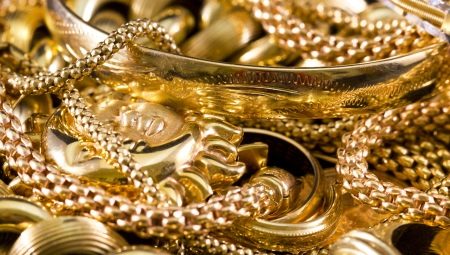
Jewelry dating from the Soviet Union era was marked with 583 finishes. The modern jewelry industry no longer uses such an alloy for the production of jewelry, but earlier this gold was the most popular commodity on the counters of Soviet jewelry outlets. There is no global difference between samples 583 and 585, but nevertheless there are certain important nuances.
What it is?
Until the period of 1927, gold items in our country were made according to 583 standard standards. Due to its low price gold was willingly exported from the USSR by foreign citizens, while the young Soviet republic needed money for its formation and development. Since the days of tsarist Russia, the quality of gold has been characterized not by breakdown, but by carats. But it was already in 1927 that it was decided that Soviet gold needed an increase in the price, and therefore, an improvement in the characteristics of its alloy - it was then that the transfer of quality assessment was made not in carats, but with the help of the sample adopted in the countries of all the world.

It was believed that 14-carat gold corresponds to 583 standard. Pure, 100% gold was 24 carats, and its fineness was marked 1000. If you divide 14 carats by 24 carats, and then multiply the result by 1000, the product is 583.33. When rounding a number according to mathematical rules, the figure 583 appears - this is how the first stigma for gold products appeared in the USSR. In order to bring the metric system in line with world standards and improve the quality of the gold alloy, thereby increasing its cost, the precious alloy began to be added 2 tenths of a percent of gold more than it was done before - this is how the 585 standard was created, accepted all over the world.
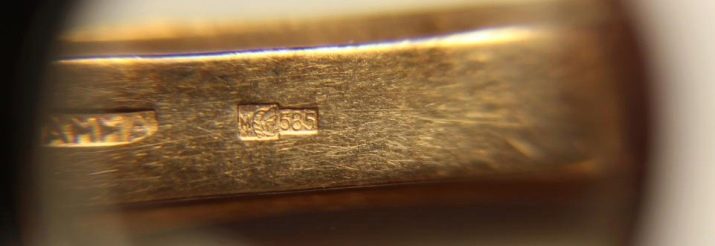
Since 1995, our country has stopped producing gold jewelry, the fineness of which was marked with the number 583. Today, such jewelry values can only be found in pawnshops, as well as in private collections or antique dealers.
Because of in the composition of 583 gold alloy copper was 2 tenths of a percent less than in alloy 585, products made from it were called pure gold - copper gave the alloy of metals a characteristic reddish tint. Earlier, the old pre-revolutionary money, called chervonets, was of a similar reddish color - hence the name "chervonny", that is, like a gold piece.
Alloy 583 also had other color shades - whitish, greenish or yellow-pink.
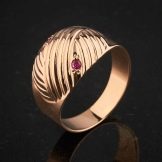
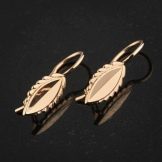
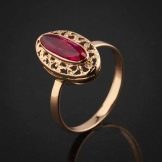
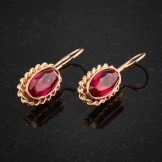
Composition and properties
As a natural mineral, pure gold, after being melted, showed high ductility, and in order to strengthen the alloy, a small part of other metals was added to it. These additives are called ligatures. Copper or silver were used as additives in the gold alloy; it happened that both components could be used at the same time.
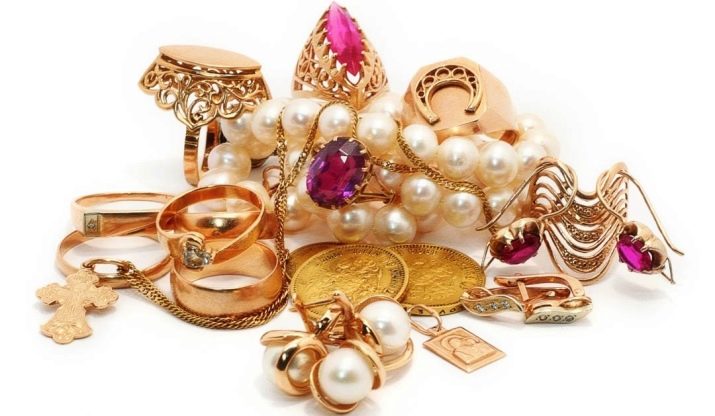
The composition of the 583 gold alloy consisted of the following elements:
- natural gold - 58.3%;
- silver - 8%;
- copper - 33.5%.
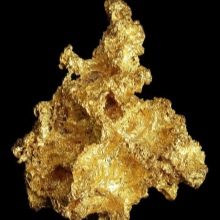
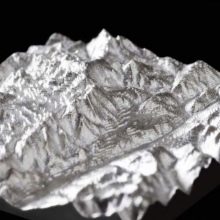
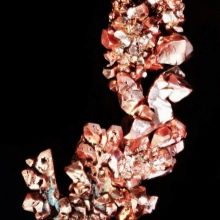
If the ligature contained only copper or only silver, zinc, nickel or palladium could be added to replenish the remainder of the composition. Depending on what the composition of the ligature was taken, at the output the finished products were obtained with certain color shades. For example, zinc and palladium gave the finished gold jewelry a whitish steel note, and the high copper content tinted the precious alloy in a rich red hue. However, playing with the percentage of impurities in the ligature, the jeweler had to invariably observe the standard proportions of the gold content - they had to be at least 58.3% of the total volume of the alloy.
Only in this case the mark of 583 tests could be put on the gold jewelry item.
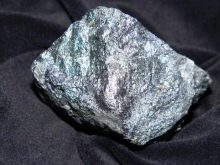
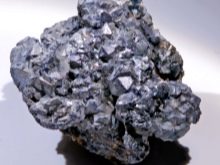
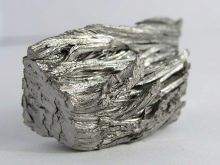
If in the drag alloy there was a ligature of various combinations of metals, then the gold changed its hue. Knowing this property, jewelers created quite interesting color schemes for their 583-assay jewelry. The composition of the ligature could be as follows:
- pure gold - Cu 33.5% + Ag 8.2%;
- pink tint - Cu 32% + Ag 9.7%;
- pink-yellow tint - Cu 22.7% + Ag 19%;
- lemon color - Cu 11.5% + Ag 30.2%;
- pronounced white tint - Cu 3% + Ag 11% + Ni 25% + Zn 2.7%.
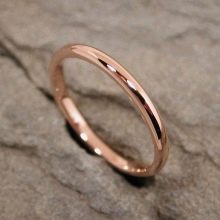
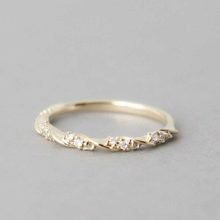
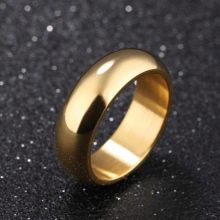
The alloy, which contained in its composition, in addition to copper and silver, also nickel and zinc, was used for finishing works, as well as inserts for the setting of semi-precious and precious stones, because such a composition of the material was distinguished by the greatest strength during the performance of the work process itself and wear resistance during the operation of the finished product.
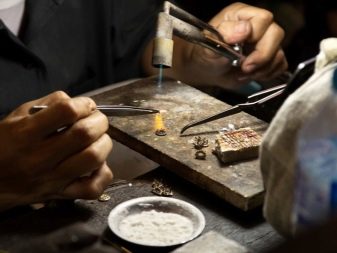
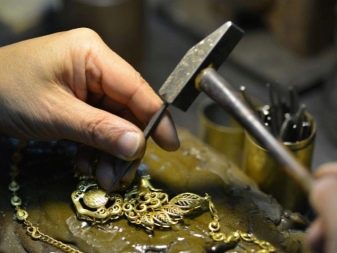
Where is it found?
The 583 mark can be found on jewelry made in the pre-existing Soviet Union. ANDVarious jewelry was made from such gold: rings and signet rings, earrings, pendants and pendants, chains and bracelets, frames for watches, brooches and so on. For the male half of the population, prestigious gold items were a cigarette case, cufflinks, a signet ring, a chain, an Orthodox cross, and dental crowns. The demand for gold jewelry was especially high in the early 90s. Currently, this kind of jewelry is no longer in vogue, although many of them still look interesting from the point of view of artistic performance.
The 583-karat gold alloy was once in demand due to its strength, good soldering capabilities, resistance to scratches and abrasion.


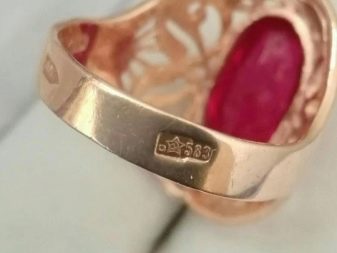
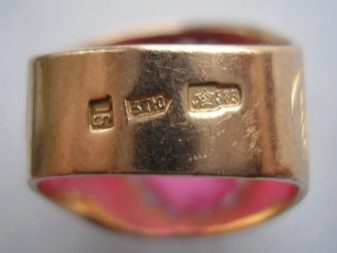
Today sample 583 in comparison with mark 585 is considered to be of low grade. It is used very rarely in the jewelry industry - unless someone brings an old product to a jeweler to be melted down for making a new one out of it privately according to a certain sketch.But even jewelry made today from such an alloy looks old-fashioned, despite the modern design, since the proportion of copper gives it a red tint, which modern jewelry has not had for a long time.
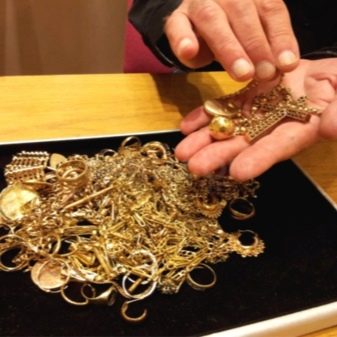
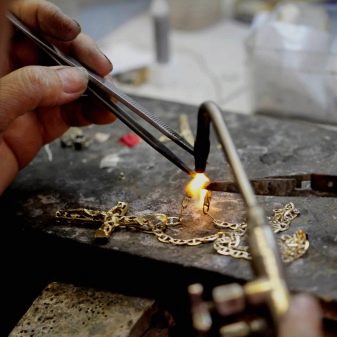
Comparison with 585 breakdown
As for yellow gold, its best fineness to date is 585. It differs insignificantly from 583 fineness. By the level of content in the precious alloy 583 samples of pure Au metal is 0.2% less than in the alloy 585 samples. It would seem that this is an insignificant trifle, but it nevertheless affected the price - it became higher. Jewelry alloys of 583 assay are low-grade, and this opinion also appeared due to the fact that unscrupulous master jewelers often made 580 alloy under the guise of 583 assay gold, where the Au content was even lower, assigning part of the precious metal transferred by the customer to themselves ...

If you look at the appearance of jewelry made from 583 and 585 samples of gold alloy, a very small number of people will be able to visually distinguish where which alloy is., and then - provided that the ligature will contain impurities of the same composition. Thus, it is in the percentage of pure gold that the differences between 583 and 585 samples lie.
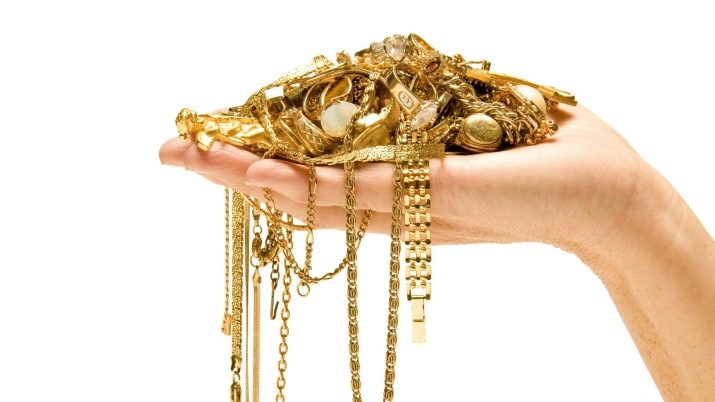
Summing up, we note that as the main distinguishing features of products with 583 assay value from jewelry made of precious alloy 585 assay value, we can single out:
- the percentage of pure gold in alloy 583 is 0.2% lower;
- jewelry of 583 assay value has a pronounced reddish or pink tint;
- the cost of 1 gram of 583 gold is lower than that of 585 gold;
- in modern industry, products from alloys 583 are no longer produced.
In addition, jewelry produced in the Soviet era from 583 standard gold was most often made massive and unpretentious, unique models were rare, and they were not available to the mass consumer, most often, they were stamped jewelry of the same type.
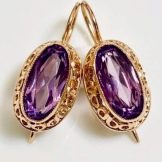
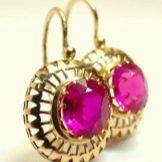

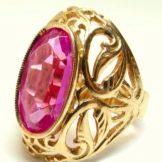
Some pre-revolutionary jewelry possessed sophistication, but it has now become unlikely to acquire them - they are in private collections or are inherited by families as heirlooms.
Nowadays, modern jewelers do not chase the weight of the product, but pay the greatest attention to the uniqueness of the artistic performance. - this is the only way to win consumer loyalty and sell gold jewelry with a huge share of competition in this area.
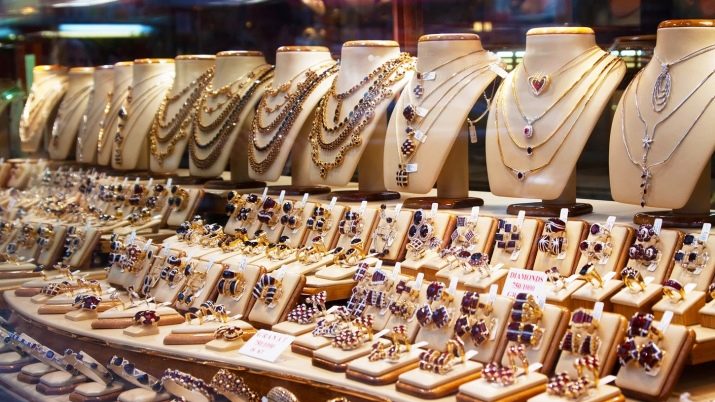
How to care?
Products made of a precious alloy are distinguished by increased resistance to mechanical damage and therefore are not capricious in use and maintenance. However, due to the copper contained in the ligature, jewelry can oxidize when it comes into contact with oxygen and a humid environment, thus losing its original luster. For To restore the attractive appearance of your jewelry, it is important to maintain regular maintenance procedures.
- The jewelry should be washed in a warm soapy solution without the use of acidic reagents, after which it should be rinsed with clean water and polished with a soft suede cloth or cotton cloth.
- For a more intensive polishing of gold, a special green polishing paste called "GOI Paste" is used. Before polishing, the jewelry is first cleaned by washing in soapy water and drying, and then a little paste is applied to the item and polished with a piece of soft semi-coarse felt. The final shine is done with suede, felt or wool napkins. After polishing, the jewelry must be washed again in soapy water, rinsed and dried.
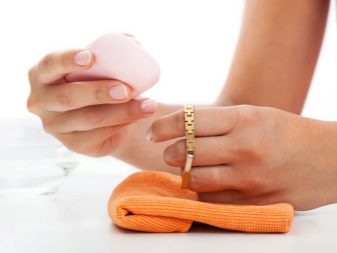
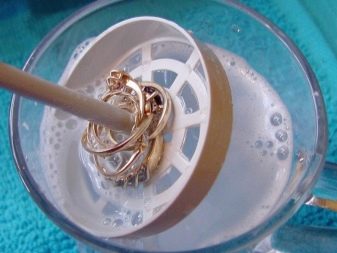
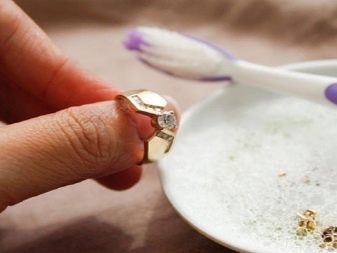
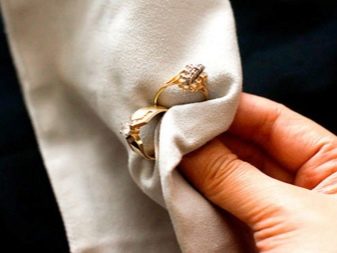
In Soviet times, to enhance the shine of gold jewelry, women of that time rinsed their rings and earrings in water with sugar dissolved in it. Such a concentrated solution covered the product with a thin film and covered small scratches, as a result of which the surface of the product became outwardly smoother and shinier in appearance.
To preserve its shine and beauty for a gold piece, it is important to treat it with care. Do not carry out agricultural or household work, repairs or cooking with gold jewelry.
To prevent stains from appearing on gold, it is required to protect it from contact with acids, alkaline compounds, medicines and cosmetics - these products may contain an aggressive environment that, upon coming into contact with gold, will irrevocably spoil the jewelry.
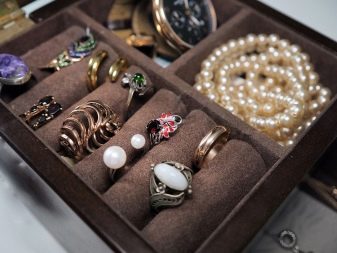
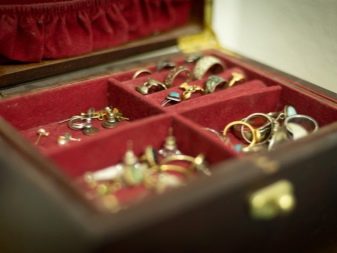
Price
Due to the fact that the precious gold alloy 583 is no longer in demand, the price for it is static and not prone to sudden changes. The national average for a gram of 583 gold is 1000-1100 rubles.
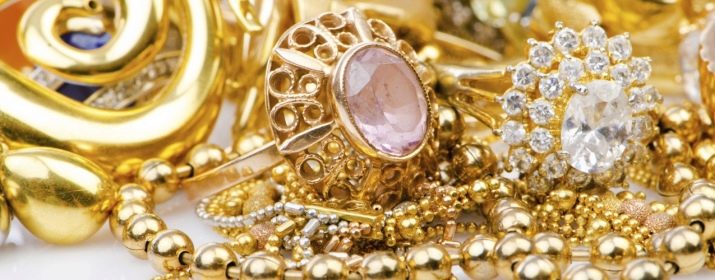
To correctly determine the market value of gold, they use data provided by the Central Bank of Russia in an open source. Calculations in determining the price of gold will be straightforward. For example, let's determine the price of 583 gold as of January 25, 2020:
- according to the Central Bank of the Russian Federation, the sale price of 585 gold is 1,910 rubles. /G;
- we consider the cost for the alloy of sample 583, while reducing the coefficient 19.10 / 1000x583 = 1,113.5 rubles. /G.
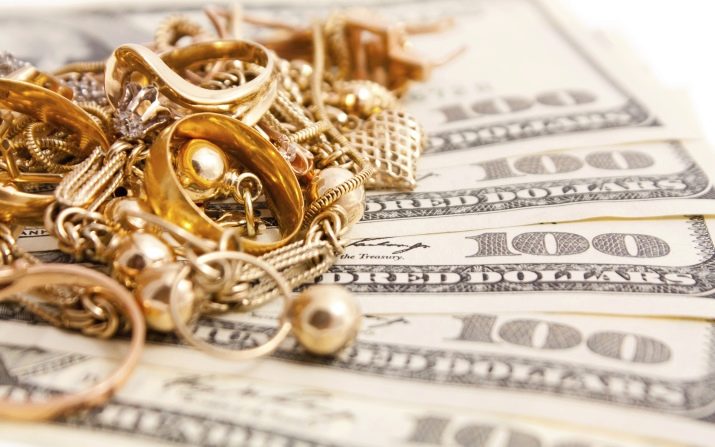
Thus, it turns out that 1 gram of 585-carat gold costs 1,910 rubles, and 1 gram of 583-carat gold costs 1,113.5 rubles. The difference will be 796.5 rubles. A now you can calculate how much a gold ring weighing 2.5 grams will cost:
- 1910x2.5 = 4 775 rubles. - the cost of the ring 585;
- 1113.5x2.5 = 2 783.75 rubles. - the cost of the ring is 583 samples.
As you can see from the example, the difference is quite significant, almost 2 times, although the percentage of gold content in the 585 alloy compared to the 583 fineness is increased by only 0.2%.

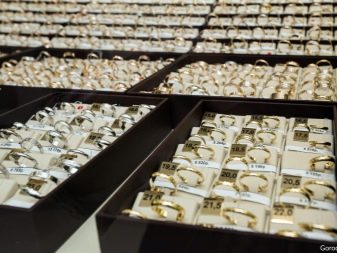
You won't be able to buy Soviet gold 583 assay value in a modern jewelry store with all your desire - it simply isn't there. But products from such a precious alloy can be found in commission purchases or at antique dealers. The cost of 1 gram in a pawnshop when buying gold is slightly lower than the market price - for 583, as well as for 585, it is about the same. If you want to buy your product back, its price will already be an order of magnitude higher.
In antique shops, the price of a piece of jewelry depends on the year of its production, weight, appearance and artistic value. The price of antiques is set by its owner. The cost of such items is quite high - it can in no way be lower than the market price of gold.
The video below shows 583 gold jewelry.








